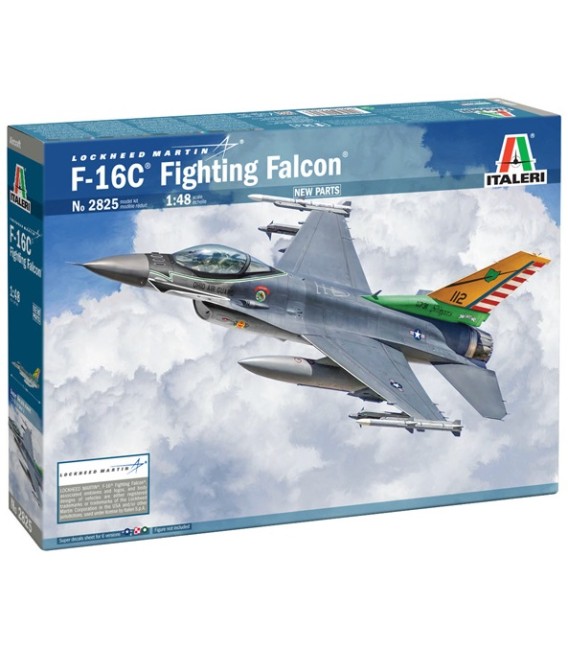2825 F-16C Fighting Falcon - Italeri Scala 1/48
Box Dim. 345 x 60 x 240 mm.
The F-16 Fighting Falcon is an American single-engine multirole light fighter aircraft. Works on the F-16 project began in 1971 at General Dynamics, which by 1993 was part of the giant Lockheed Martin. The YF-16 prototype first flew on February 2, 1974. A major technical breakthrough was the use of a fly-by-wire computerized electronic control system, which made it possible to reduce the area of the wings and tail, thereby reducing the weight of the entire aircraft. The F-16 was the first fighter in the world to use such a system. Early versions were largely made of aluminum alloys (about 83% of the total structure), but eventually gave way to composites.
The different versions of the F-16 are powered by three versions of the engines: Pratt-Whitney F-100-PW-200, General Electric F110-GE100 and Pratt-Whitney F-100-PW-2020. The "brain" of the guidance system was the APG-66 radar, later replaced by the APG-68 (V) radar.
Serial production of the F-16 began in 1975. It was also attended by European NATO countries for which it meant an injection of new aeronautical technologies. Final assembly took place in the USA, Belgium and the Netherlands. The first serial F-16A Fighting Falcon flew on 7 August 1978.
The F-16 also proved its worth in combat, with a series of aerial victories in the Lebanon War (1982) and during Operation Desert Storm (1991). By the end of the 20th century, more than 4,000 of this successful aircraft had been produced.
Technical data: Maximum speed: 2,170 km/h, rate of climb: 254 m/s, maximum ceiling 15,240 m, maximum range: 3,890 km, fixed armament: - one six-barrel 20 mm M61A-1 cannon, suspended - up to 9,275 kg load.







































